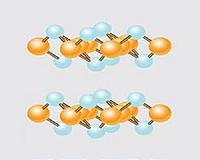 |
Oak Ridge TN (SPX) Sep 23, 2010 Four East Tennessee homes completed this month showcase how scientific research can make dramatic changes in the cost of heating and cooling our homes. The four houses, located in the Wolf Creek subdivision in Oak Ridge, use about 55 to 60 percent less energy than conventional houses while maintaining similar amenities. "These homes are a great example of what can be done when we partner with industry to provide scientific solutions to real problems," ORNL Director Thom Mason said. Although the houses will remain unoccupied during the research period, appliance, lighting and water use will occur automatically in the experimental homes to simulate an average family's energy use. ORNL researchers will collect data to determine which technologies, either individually or as a group, deliver the most 'bang for your buck.' The four homes were built over the past two years by Schaad Companies, of Knoxville, at their own expense. Jennifer Banner, CEO of Schaad Companies, said consumers will benefit from the project's goal to identify affordable energy-saving options for new and existing homes. "Our vision has always been to drive innovation into the marketplace," Banner said. "The bigger question is which innovative technologies can be cost-effective for consumers who want to improve their existing home or build a new one. We hope to gain that knowledge from the ZEBRAlliance project." The project team will switch out equipment, appliances and controls with the latest energy-efficient products as they become available. At the end of the 30-month research period, the houses will be offered for sale to the public. The nation has already caught a glimpse of the new homes, through an episode of "This New House" on HGTV's DIY network. Filmed on site in Oak Ridge, the episode explained many of the innovative construction techniques and affordable technologies that are used and monitored in the four ZEBRAlliance houses. The initial airing on Aug. 26 has sparked interest from viewers across the country. President Obama's goal of an 83 percent reduction in carbon emissions by 2050 has researchers increasingly seeking energy-saving options in sectors such as buildings, which are responsible for 40 percent of the nation's total carbon footprint. "Because of the ongoing involvement from builders, designers, component manufacturers and utilities, projects like ZEBRAlliance have the ability to identify solutions and implement them with speed and scale," said Roland Risser, program manager of the Department of Energy's Building Technologies Program. Rudy Shankar, TVA vice president of Technology Innovation, said that TVA is interested in employing the lessons learned from the ZEBRAlliance houses to benefit a broad range of customers throughout the region. "TVA is engaged in measuring and analyzing energy usage for homes built with varying energy-saving construction practices and appliances," Shankar said. "The homes built under the ZEBRAlliance and other TVA-sponsored projects represent the full spectrum of housing from basic to high end, and various state-of-the art building envelope and equipment utilization in a controlled setting to develop verifiable and defensible database for wide-spread implementation." Johnny Moore, assistant manager for science, DOE Oak Ridge Operations, said the collaborative project is a role model in the national commitment to cut energy costs and reduce carbon emissions. "The example we see today - a partnership between government, business and industry - will help us meet similar energy challenges in other areas such as transportation, in our electric grid, and in protecting and preserving our environment," Moore said. ORNL is managed by UT-Battelle for the Department of Energy's Office of Science.
Share This Article With Planet Earth
Related Links ZEBRAlliance Oak Ridge National Laboratory Powering The World in the 21st Century at Energy-Daily.com
 Many Roads Lead To Superconductivity
Many Roads Lead To SuperconductivityBerlin, Germany (SPX) Sep 13, 2010 Since their discovery in 2008, a new class of superconductors has precipitated a flood of research the world over. Unlike the previously familiar copper ceramics (cuprates), the basic structure of this new class consists of iron compounds. Because the structure of these compounds differs from the cuprates in many fundamental ways, there is hope of gaining new insights into how the phenomenon of ... read more |
|
| The content herein, unless otherwise known to be public domain, are Copyright 1995-2010 - SpaceDaily. AFP and UPI Wire Stories are copyright Agence France-Presse and United Press International. ESA Portal Reports are copyright European Space Agency. All NASA sourced material is public domain. Additional copyrights may apply in whole or part to other bona fide parties. Advertising does not imply endorsement,agreement or approval of any opinions, statements or information provided by SpaceDaily on any Web page published or hosted by SpaceDaily. Privacy Statement |